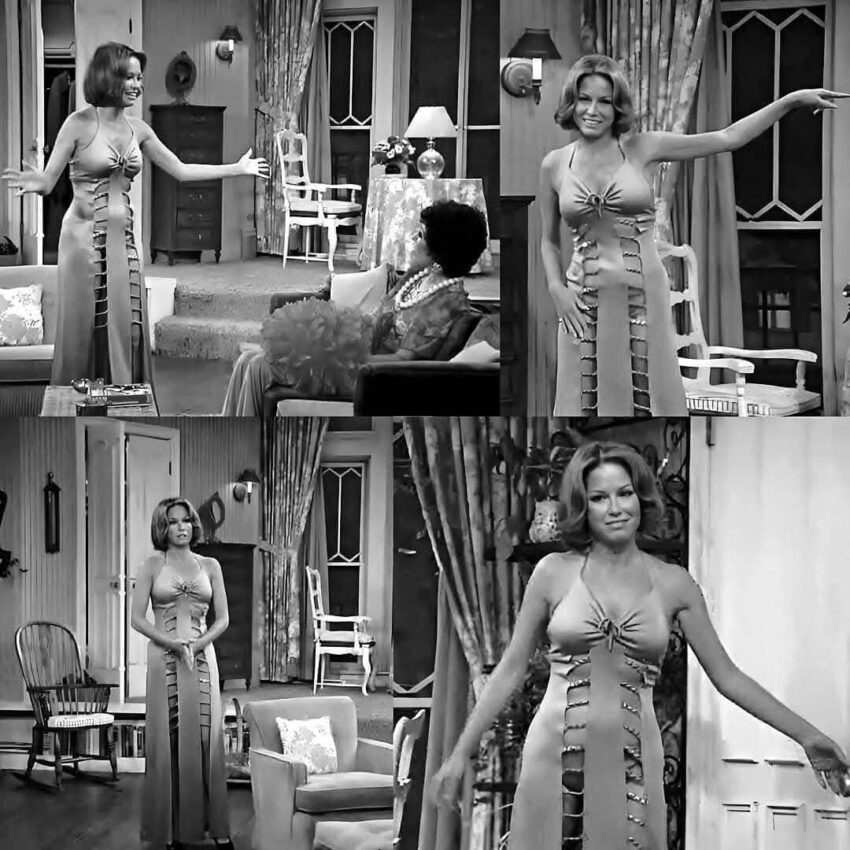On January 10, 1975, the world tuned in to The Mary Tyler Moore Show for the controversial “Green Dress Episode” (Season 5, Episode 21, titled You Try to Be a Nice Guy). This particular episode became one of the most talked-about moments in television history at the time, largely due to the green dress worn by Mary Richards (played by Mary Tyler Moore). The dress, which featured daring cutouts along each side, was considered shocking for primetime television in the 1970s, exposing more skin than audiences were accustomed to seeing, especially on a character as wholesome and relatable as Mary Richards. The outfit became a symbol of the shifting boundaries in television fashion and the evolving portrayal of women in media during the era.
The episode’s plot centered around Mary trying to help her friend, Sherry, a former prostitute who was now attempting to start a new career as a fashion designer. The role of Sherry was played by Barbara Colby, whose performance was memorable but tragically overshadowed by events that occurred after the episode aired. Barbara Colby, who had come from a theater background and had made notable television appearances, including on Columbo, was killed in 1975 at the age of 36. She was tragically shot during a robbery in a parking lot in Venice, California, just after her appearance on The Mary Tyler Moore Show. Her untimely death added a layer of poignancy to her performance and the episode itself, marking a dark moment in the entertainment world.
The “Green Dress Episode” remains iconic not just for its daring fashion choices but also for its cultural impact. In the 1970s, television was undergoing a transformation, with shows like The Mary Tyler Moore Show challenging traditional norms and exploring more complex, real-world issues. The green dress, with its boldness and sensuality, was a visual metaphor for the changing roles and expectations of women in both television and society. Despite the controversy surrounding it, the episode exemplified the way in which the series broke new ground in portraying women as independent, multifaceted characters.
